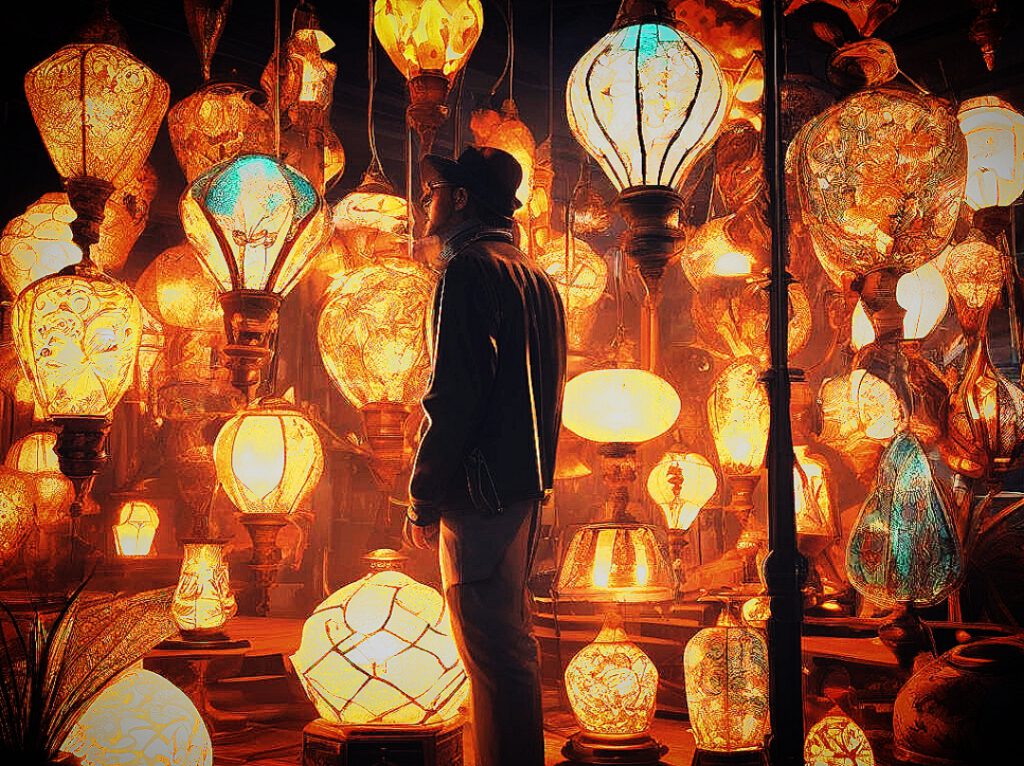When moving into a new apartment (or perhaps your first one), a mixed mood prevails. Boxes have not yet been properly unpacked and undecorated rooms give a feeling of emptiness. Walls are kept in plain white and there are no lamps hanging on the ceilings. At this point, it is quite normal to be a little nervous when it comes to taking care of the lighting installation yourself.
To avoid electric shocks, always find the fuse box first and switch off the power to the room you are working in! If you now want to connect a lamp, there are three types of wires to be known and connected correctly (in terms of color). This is usually done using lamp terminals or plug-in terminals. Push the wires into the terminal and tighten the screws to ensure a secure connection.
The flow of current in an electrical system
The phase (usually black or brown) carries the electrical current from the fuse to the lamp. A neutral wire (usually blue or grey) then carries the current back to the source. A safe and closed circuit is essential for lamps to function. The earth wire (also protective conductor) is usually yellow-green and provides additional safety by discharging excess current in the event of a fault.
If, contrary to expectations, the colours of the wires are difficult to see or are not standardised, it is better to call in a professional electrician. Simply using a two-pole voltage tester on exposed wires to solve the puzzle is not recommended. If the fuse is switched off, no voltage can be measured anyway. Once the wires are properly connected, you can mount the lamp on the ceiling.

Changing a light bulb: safe and easy
A seemingly problem-free task because it is an everyday task, but defective light bulbs still require careful handling. Of course, cutting off the power supply remains the most important safety measure. This means: unplug floor lamps, turn off the light switch for ceiling lamps or, if you have a personal need, turn off the fuse for the relevant room.
If the old bulb was lighting up the room right before it failed, let it cool down first to avoid burns. If it has a screw socket, turn the bulb anti-clockwise (i.e. to the left) until it comes off. If it has a plug-in version (also known as a base), pull carefully so as not to damage the bulb’s socket.
One of the most common sockets and thus somewhat standard is E27 with a eponymous diameter of 27 millimeters. A smaller variant is E14, which is often used in table and ceiling lamps. There are also special sockets such as GU10 or MR16, which are suitable for halogen or LED bulbs and usually have a base with a special closure.
Choosing the right brightness
As a measure of a lamp’s energy consumption, a higher wattage is usually associated with more brightness. For example, traditionally the wattage was used as an indicator of light intensity, but since the efficiency of modern lighting technologies such as LED is much higher, this way of thinking is no longer reliable. That’s why it makes sense to consider the amount of light actually emitted by a lamp via the lumen number.
More of this is needed in the study or kitchen than in other rooms, such as the bedroom. However, installing a bulb with a higher wattage than recommended in the instruction manual or on a label can not only damage the lamp, but also pose a safety risk as it can lead to overheating and, in the worst case, a fire.

